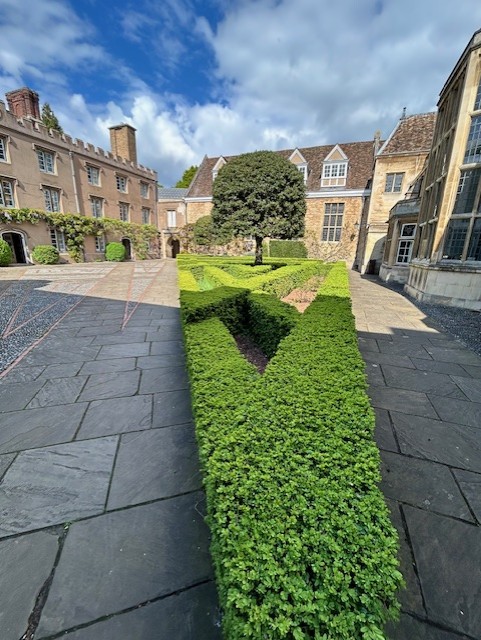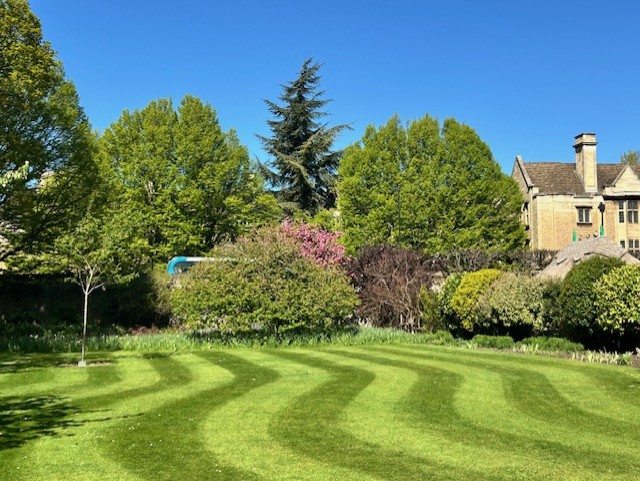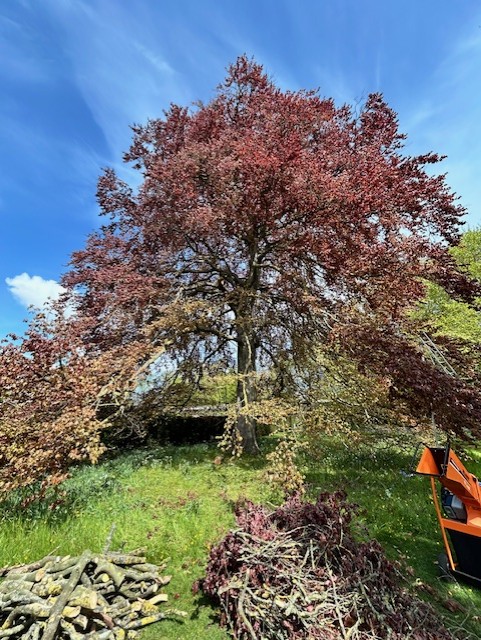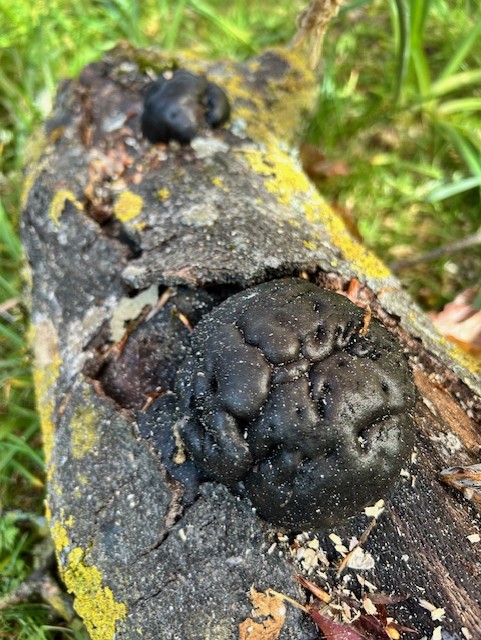Blog
30 April 2025
As I write this latest edition of the Garden Blog, the sun is shining, the sky is blue and the early morning call from the birds fills my ears with joy. The Emma gardens always look at their best in the sunshine, especially on a spring morning when the garden awakes. The site is quiet and peaceful, with less noise from the buses, and the students are still dreaming of the day ahead. It’s the most perfect time of day for me, before the hustle and bustle of the day really begins.

It is also a time when it is almost as hard to stay caught up with things. The garden can look immaculate on a Friday but, come Monday morning, the grass and weeds have grown as if we had never been here at all. Please be patient with us gardeners; we are doing our best for you. It does, of course, calm down, but I am sure many of you have that experience of tidying your own gardens, then going away for a week’s holiday, only to return to a jungle. It’s the same for us but on a much larger scale.
The gardens are looking good, though. In the Paddock meadows, the Smyrnium perfoliatum (the yellow-flowered biennial), has spread superbly to give a golden glow under the trees’ canopy. It can be admired from right across the Paddock. At the very top end of the Paddock, the dappled colours of the tulips stand out almost as if an artist had just flicked their paintbrush at it.

The Fellows’ Garden is also looking splendid. The bluebells are the latest colour from our succession of bulbs under the Oriental Plane tree. The season starts with the winter aconites, followed by the Chionodoxa forbesii (the glory of the snow), and finishing with the bluebells. There is something quite special about the bluebells, giving the impression of walking through a bluebell wood, given the vastness of the magnificent Oriental Plane canopy.

Unfortunately, in the Fellows’ Garden, we lost a large branch on the beautiful Copper Beech tree. As we inspected the large branch on the floor one morning, we could see that attached to the branch was a fungal growth attached. This could not be seen from our regular visual inspection, as they sat on the top side of the branch, away from view. The growths almost look like a black brain.

The growths are called Daldinias. They are also known as King Alfred’s cakes. The growths will have been caused by squirrels damaging the bark of the branch. The fungal growth then appears from the wound site. The Daldinias can be found on dead or decaying wood and can last for years. The branch that fell was just a natural way of protecting itself. The weight of the branch determined when it was ready to fall. Hopefully the tree is managing itself, although we will keep a close eye on it as we have our regular tree surveys.
The Daldinia is known as King Alfred’s cakes due to the myth that King Alfred in the 9th Century, when being overrun by the Vikings, took refuge in the home of a peasant woman. She asked King Alfred to watch over the baking of some cakes but, unfortunately, they were left to burn. King Alfred was scorned by the peasant woman.
I hope you all get a chance to enjoy the gardens whilst the weather is with us.
Best wishes.
Brendon Sims, Head Gardener
